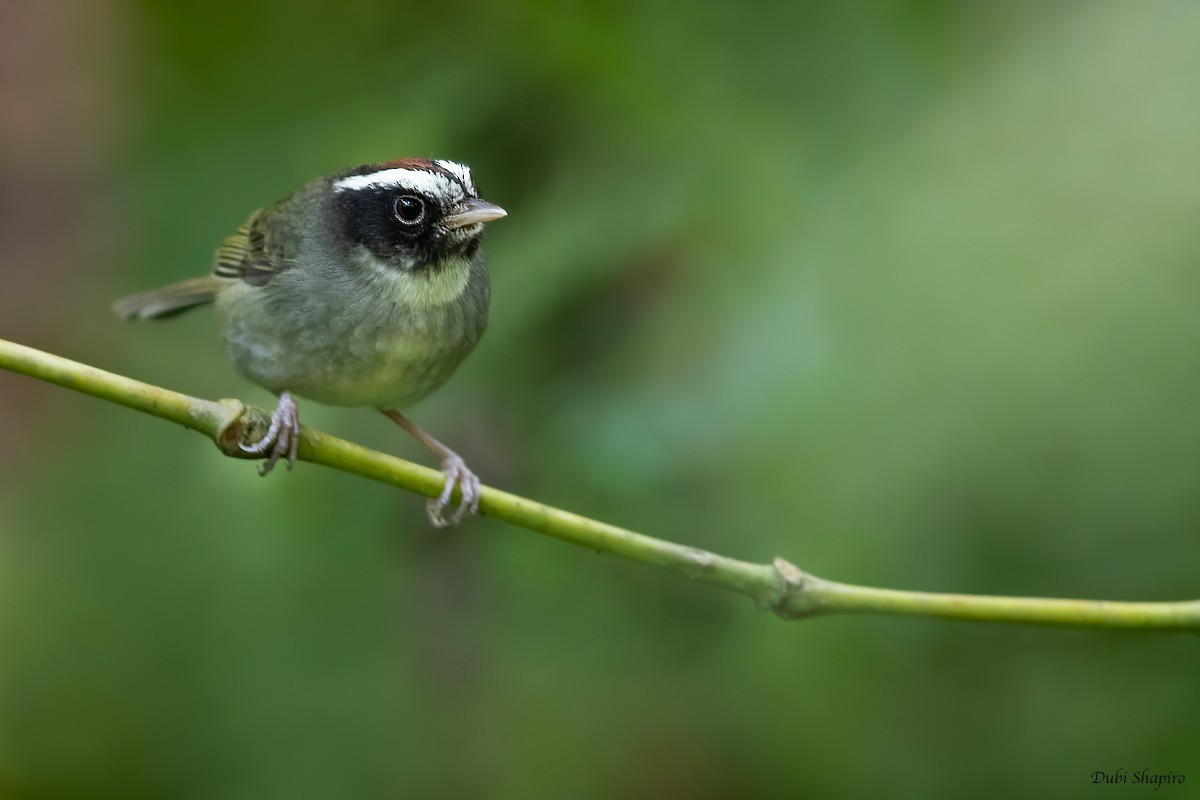Black-cheeked Warbler
A species of Basileuterine Warblers Scientific name : Basileuterus melanogenys Genus : Basileuterine Warblers
Black-cheeked Warbler, A species of Basileuterine Warblers
Botanical name: Basileuterus melanogenys
Genus: Basileuterine Warblers
Content
Description General Info
 Photo By Dubi Shapiro
Photo By Dubi Shapiro Description
The black-cheeked warbler (Basileuterus melanogenys) is a New World warbler, resident breeding bird endemic to the Talamancan montane forests of Costa Rica and western Panama. It is normally found in oak forests with a dense bamboo understory from 2500 m altitude to the timberline, but occasionally occurs as low as 1600 m. The breeding pair builds a bulky domed nest with a side entrance on a sloping bank or in a gully, and the female lays two white eggs. The black-cheeked warbler is 13–13.5 cm long and weighs 13 g. It has a rufous crown, long white supercilia and black cheeks. The upperparts are dull olive, the breast is olive-grey, and the belly is yellow-white. The sexes are similar, but the young bird is browner on the upperparts, has a dull supercilium, a greyer breast, and shows two cinnamon wingbars. Despite this species’ restricted range, it has three subspecies. B. m. melanogenys, the nominate race described above, breeds in central and southern Costa Rica. B. m. eximius is highly localised in a small area of western Panama, and is slightly whiter on the belly than melanogenys. B. m. bensoni is highly localised in a small area of west-central Panama, and is whiter below than eximius, and a purer grey above. The black-cheeked warbler primarily feeds on insects, spiders and other small invertebrates, taken low in the undergrowth. The call note of the black-cheeked warbler is a hard tsit, and the male's song is a lisping spluttered tsi tsi wee tsi tsi wu tsi wee. 
Size
13 cm
Nest Placement
Shrub
Feeding Habits
Black-cheeked Warbler primarily consumes insects, including spiders, moths, caterpillars, beetles, crickets, and ants, supplemented with berries. Their foraging behavior involves actively searching through foliage. They possess adaptations for gleaning prey from leaves and branches.
Habitat
The black-cheeked Warbler is typically found in the understory of various forest types, including elfin, montane evergreen, secondary forests, and particularly oak forests with understory complexity. It favors habitats with dense vegetation such as bamboo-choked ravines. The black-cheeked Warbler avoids open areas like clearings or pastures, preferring the more sheltered and food-rich environments that its usual haunts provide within broader mountainous regions.
Dite type
Insectivorous
General Info
Feeding Habits
Bird food type

 Photo By Dubi Shapiro
Photo By Dubi Shapiro Scientific Classification
Phylum
Chordates Class
Birds Order
Perching birds Family
New world warblers Genus
Basileuterine Warblers Species
Black-cheeked Warbler